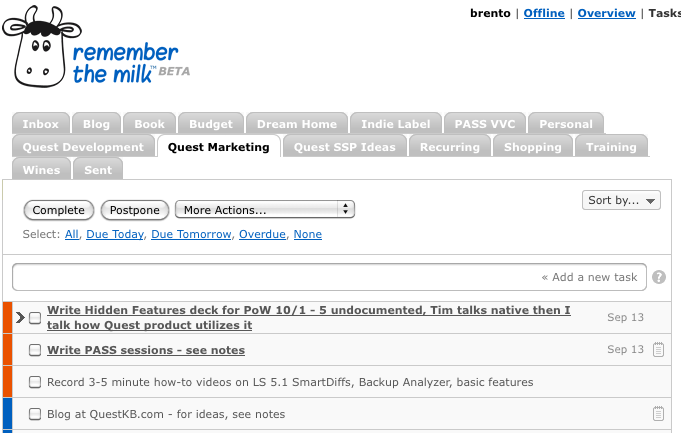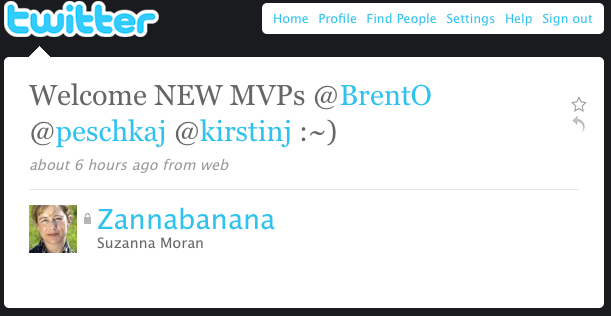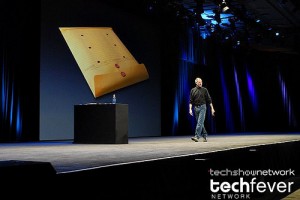The PASS Board of Directors election starts on October 12th, and we’ve got four really well-qualified candidates to choose from:
You can read their bios at the PASS Candidate List, and they’re good, but I wanted more. I emailed each of them with a set of interview questions to satisfy my bizarre curiosity. Today’s response comes from Tom LaRock:
Brent: First, thanks for volunteering to dedicate your time to the community. What made you decide to run for the Board of Directors this year?
Because there is more work to be done. I have an idea where I want PASS to be, and I want to help get us there. Being on the board allows for me to help the PASS Community as a whole. In return I get board-level work experience. See, my company is not going to let me be the COO for the next two years. But on the PASS Board I get that level of work experience, which is where I want to be with regards to my own career path.
Walk us through one of your typical workdays. What do you do?
That depends on who is asking and who is reading. Let’s just say I am currently the Database Administration Manager for a global investment management firm. I am responsible for production and project support and have a team of DBA’s located in India that provide wonderful support. My day is usually filled with routine tasks, meetings, and I get to listen to some music every now and then.
What parts of your day-to-day experience will make you a better Board of Directors candidate than the other candidates?
I do not believe I can answer that question in all fairness, as I do not know enough about what the other three candidates do in their daily routines. It would be wrong for me to assume that my experiences make me any better than anyone else. I can, however, tell you what I feel makes me a strong candidate. I believe that my ability to lead a disparate team of DBA’s located in other cities and countries gives me the experience necessary to lead a global organization such as PASS. You have to juggle a lot of things when dealing with global entities and managing people all over the world. I have that experience, both here and for PASS already, and not many other people have that same level of experience.
I’ve heard that the PASS Board of Directors is a time-consuming hobby to say the least, and at this point in our careers, none of us have tons of extra time. What other projects or things do you expect to have to cut back in order to make time for the Board? (I’d just like to give the readers an idea of how tough it is to prioritize things.)
Since I am already on the board, I do not expect I will need to cut back on anything. I expect that in the next two years I will find myself saying “no” more often so that I do not overextend myself to the point that my duties for the board suffer. It seems that with each passing day I get asked to take on new projects and I do my best to keep the end game in sight.
I believe social networking and Web 2.0 tools like Twitter, Facebook, and StackOverflow are changing the way DBAs interact with each other, get training, and solve problems. Do you agree or disagree, and why?
I agree that it has changed the way a subset of DBA’s interact with each other. And for those that use the tools it works great. I also believe there are many more DBA’s that are not as involved. While serving on the PASS Board I want to make certain we do what we can to get those people engaged and get them to contribute in whatever way they feel most comfortable.
Do you blog and use social networking tools? Where can DBAs find you online?
People can find my blog at http://thomaslarock.com, and I can be found on Twitter at http://twitter.com/SQLRockstar, Facebook at http://facebook.com/thomas.larock, and LinkedIn at http://www.linkedin.com/pub/thomas-larock/0/67b/b37. I enjoying interacting with people both online and in person. I am a naturally shy person and find it difficult to network with others, but I am doing my best to get better.
Do you have any conflicts of interest that may pose a challenge?
Not at the moment. Because I am not an independent contractor or work for a consulting firm there is less of a likelihood of a conflict of interest. In other words, my motivations during board meetings are for the best interests of the community, without consideration for any possible company or personal benefits. My reward for serving is professional growth, not financial.
Of course there are other possible conflicts, such as if I have to be in two places at once. There have been times when I needed to attend a PASS function and a non-PASS function. PASS always comes first, it’s that simple. At least for me, it is. For someone that is independent they may need to take care of business before something for PASS, and I respect that very much. That’s why it is important the Board have a mixture of members; some independent and some not.
If PASS put you in charge of increasing new memberships, what specific steps would you take?
Everything PASS does is with regards to driving new membership. So, a better question would be to simply ask: how do you plan to increase membership? And what I can tell you is that I have an idea as to what I want PASS to become and it is my hope that if we get there the memberships will naturally follow.
The simple version of my vision is to get PASS recognized as the best Professional Association for database professionals. When I was in graduate school I was automatically a member of the AMS (American Mathematical Society). As such, that was the association I would belong to if and when I became a mathematician. Now, imagine if every graduate student in CS, MIS, or whatever other tech field was enrolled as a member of PASS when they entered school? Over time we would be infused with new members, younger members, members who will stay members for a long time, members that will share with us their fresh ideas on how to make things better. Before you know it, PASS will be recognized as the same level as the AMS or even the AMA.
We can get there, and I want to help make it happen.
What do you think PASS is doing right to improve the day-to-day lives of database administrators?
PASS is an organization that is dedicated to the promotion of Microsoft SQL Server. There is more to SQL Server than just administration, so PASS is doing what it can to help all database professionals. And PASS does this by keeping three things in the back of their mind with every project: Connect. Learn. Share.
What do you think PASS could do better, and how?
Because PASS is a disparate, global entity there is one area that needs improvement and that is communication. We need to be able to communicate up and down the chain. I should mention that I feel we communicate better now than we have in the past, but we could always be doing a better job.
Sum up your goals for PASS in 140 characters or less:
Connect. Learn. Share.
Thanks for your time! Readers – you can learn more about Tom and why he’s running at his web site.




















